[BBC Micro, Argus Press Software]
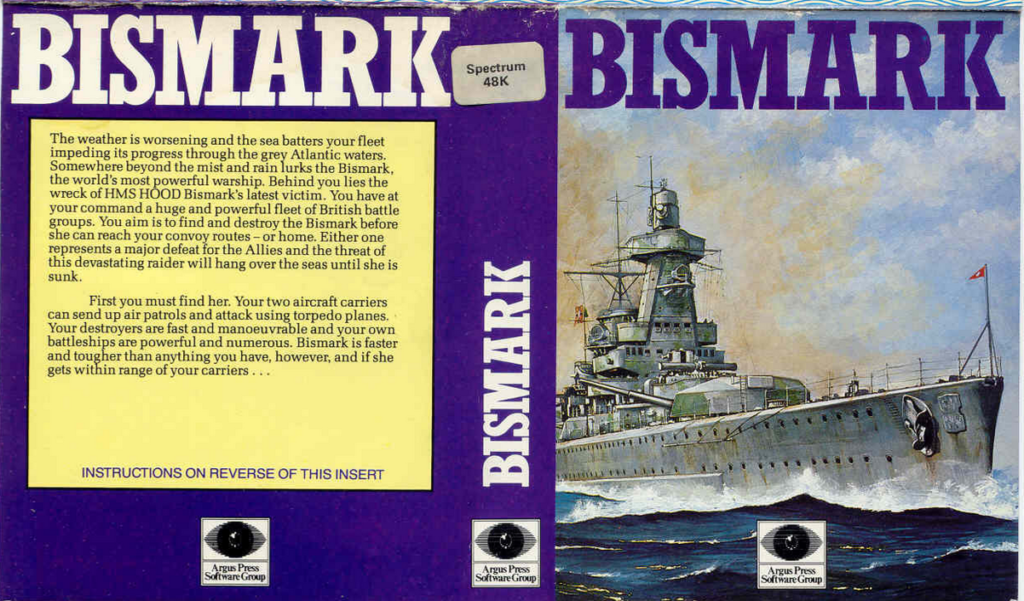
– What if, hear me out, we made an abridged version of Computer Bismarck one could play in 15 minutes tops ?

Strategy 2 : The Hunt for the Bismark, also known as – oh boy, that’s complicated, all the combinations you can create with the image below – is the second 1983 strategy game by ASP Software (soon to be renamed Argus Press Software). Despite its name, it was released at the same time as Strategy 1 : Invasion in October 1983.
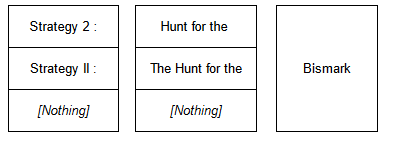
In contrast to other games centred around the Bismarck, this game commences on May 24th, during the final phase of the pursuit. The HMS Hood has been destroyed, the Prinz Eugen has departed, and the Bismarck is attempting to return home:
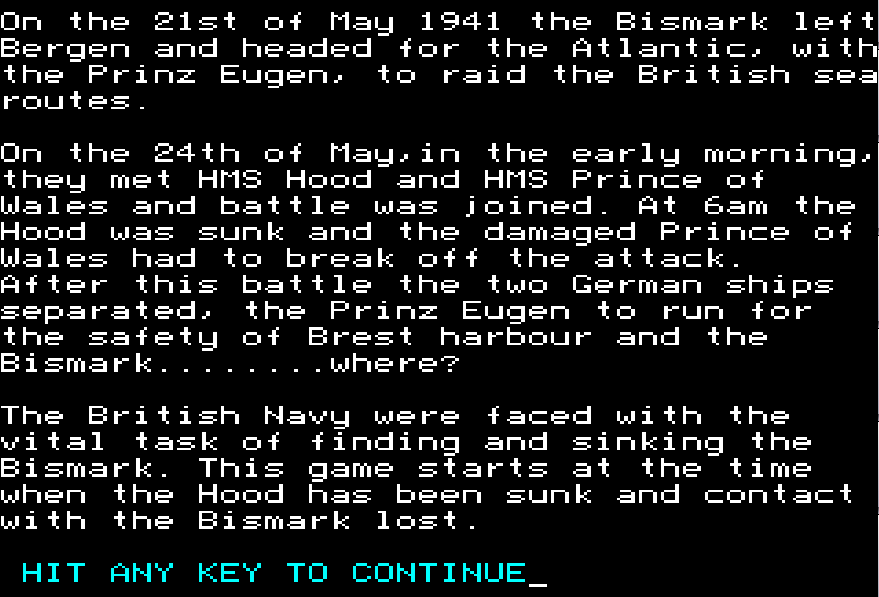
As the Admiral of the British Navy, my objective is to locate and sink the Bismarck using 12 “forces,” which can be either individual ships or groups of them.
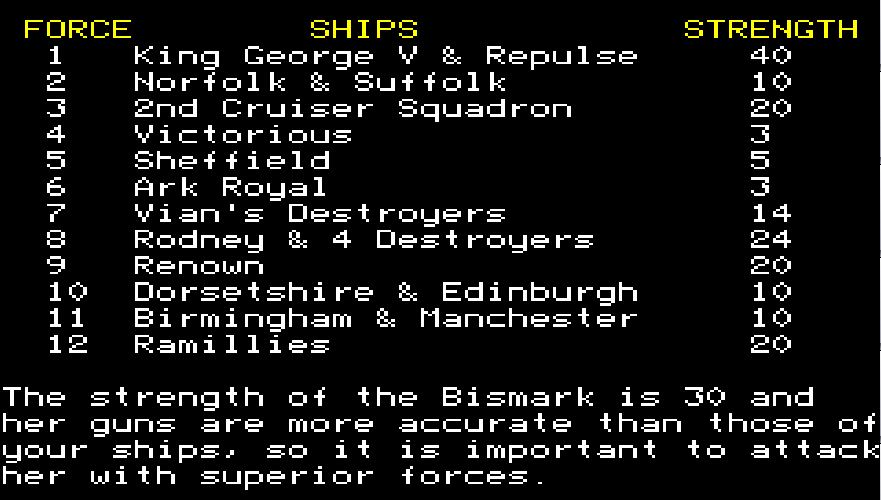
My forces are initially scattered, with cruisers HMS Norfolk and HMS Suffolk positioned not too far from the Bismarck’s starting position. The weather is clear, which allows my forces to see one square around them.
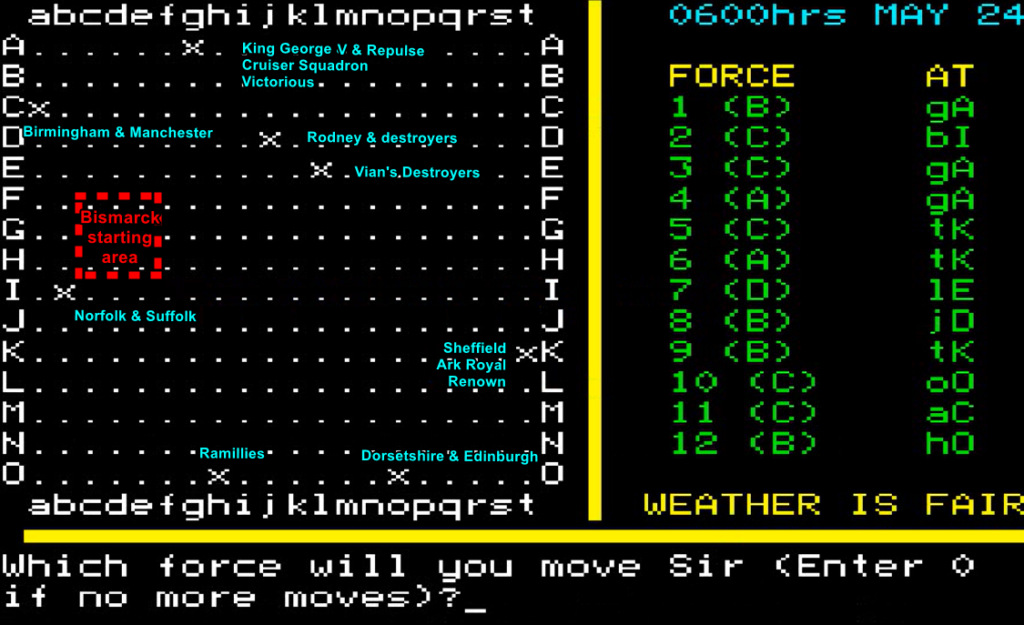
All ships can move two squares per turn, except for Vian’s destroyers, which can move three. Unlike my forces, the Bismarck can move diagonally. The Bismarck‘s objective is to either cross the map and exit East or survive for 13 turns, while my goal is to prevent that.
I direct my forces toward the Bismarck‘s starting point, and by the end of the second turn, I am fortunate: the Norfolk force detects the Bismarck. Even better, she is within range of HMS Victorious‘ planes. I launch the first of three permitted airstrikes for the HMS Victorious, but the planes fail to locate their target. Our Tier A pilots were not available ; they are fighting over England in hair-raising melees against the cream of the Luftwaffe.
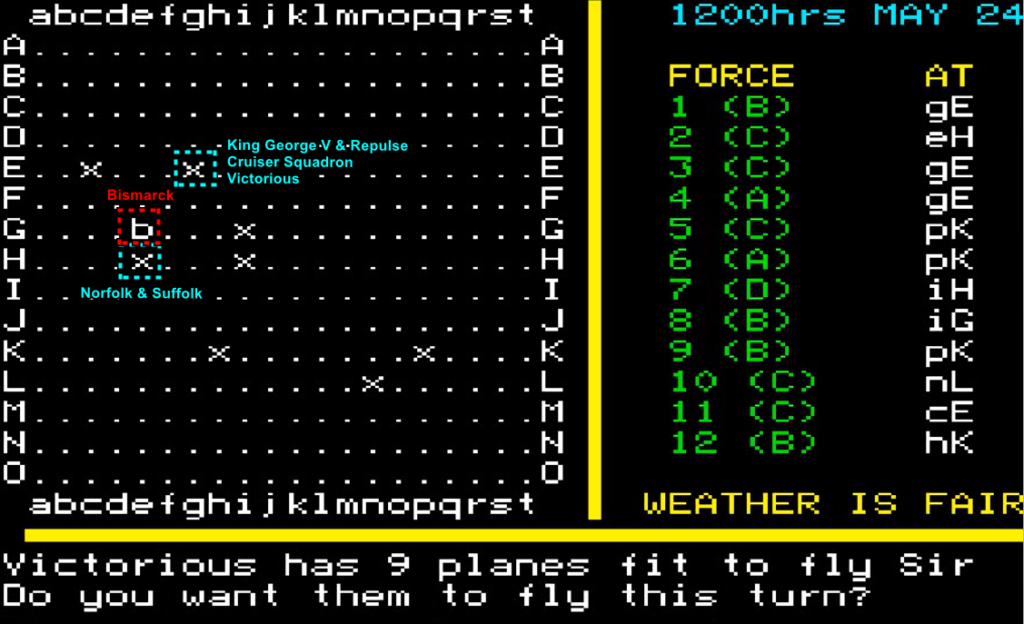
The Bismarck vanishes after her movement on turn 3. I ensure all probable squares are within sight, assisted by the favorable weather, and manage to detect her once more.
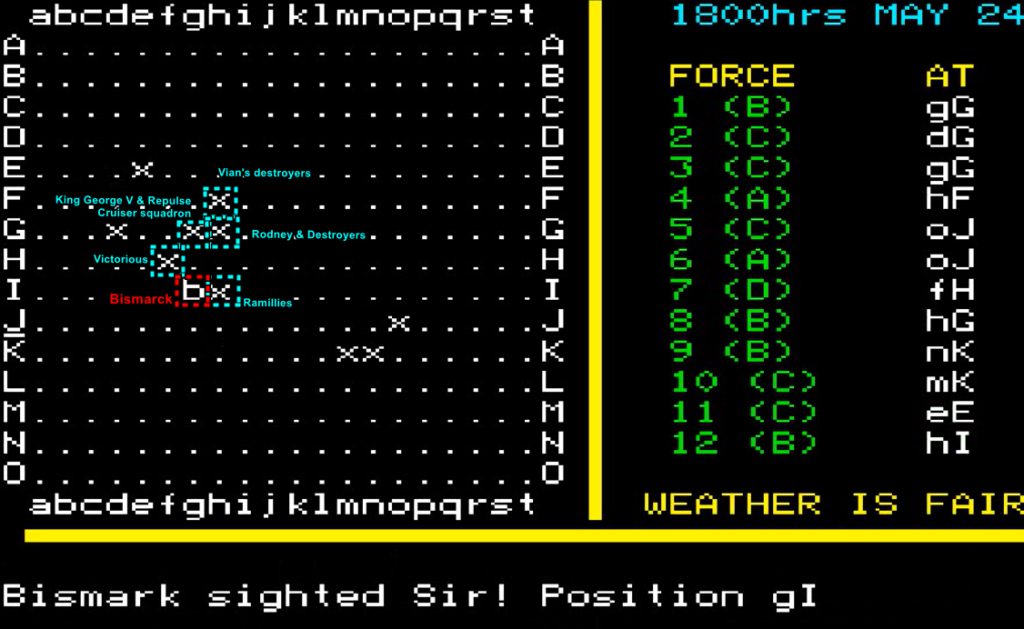
I initiate another airstrike from the HMS Victorious, but the pilots are again unsuccessful in locating their target. Our Tier B pilots were not available either, they are battling in North Africa, strafing the few trucks the Italians have and sometimes shooting down the occasional Regia Aeronautica biplane !
The following turn, the Bismarck assaults the HMS Ramillies, inflicting significant damage but also sustaining some :
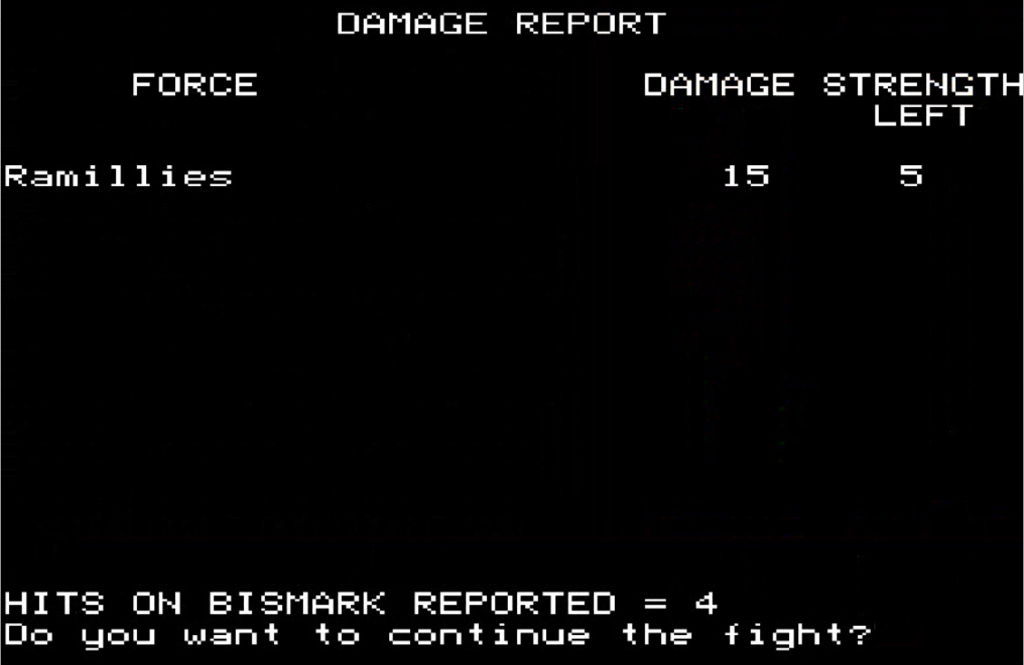
I promptly disengage (which the aging HMS Ramillies, significantly slower than the Bismarck, would have been unable to do in reality). The silver lining is that I now know the Bismarck‘s location.
Only two of my forces can reach the HMS Ramillies‘ position: the HMS Rodney and its destroyers, and the HMS Victorious. Naturally, I don’t send my aircraft carrier to engage in a gunnery duel with the Bismarck, so Force Rodney proceeds alone. The rest move as close as possible :
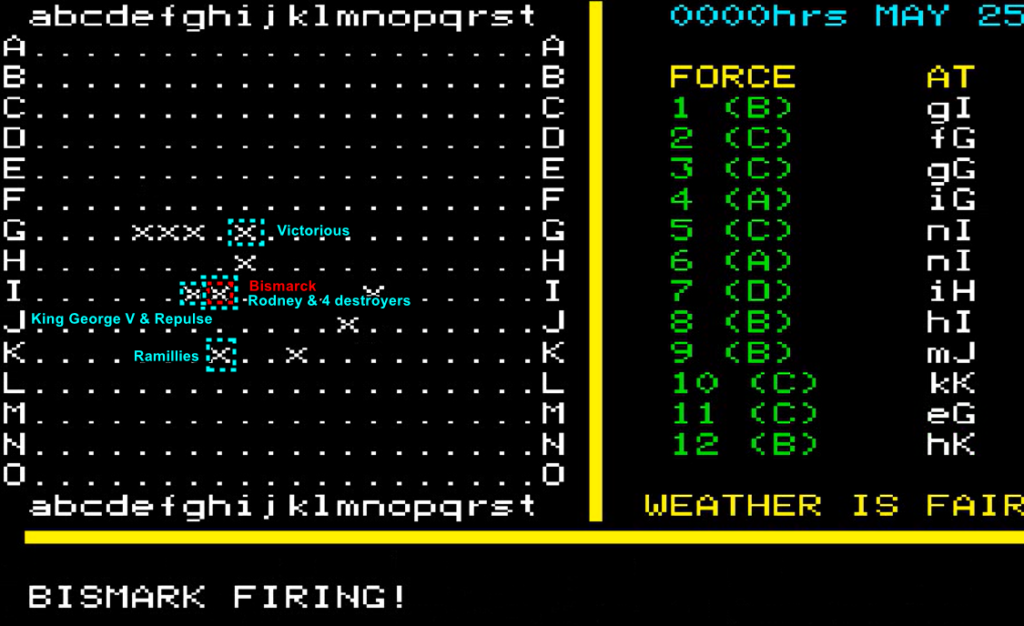
The exchange of fire with the Bismarck proves decisive, leaving the Bismarck severely damaged :
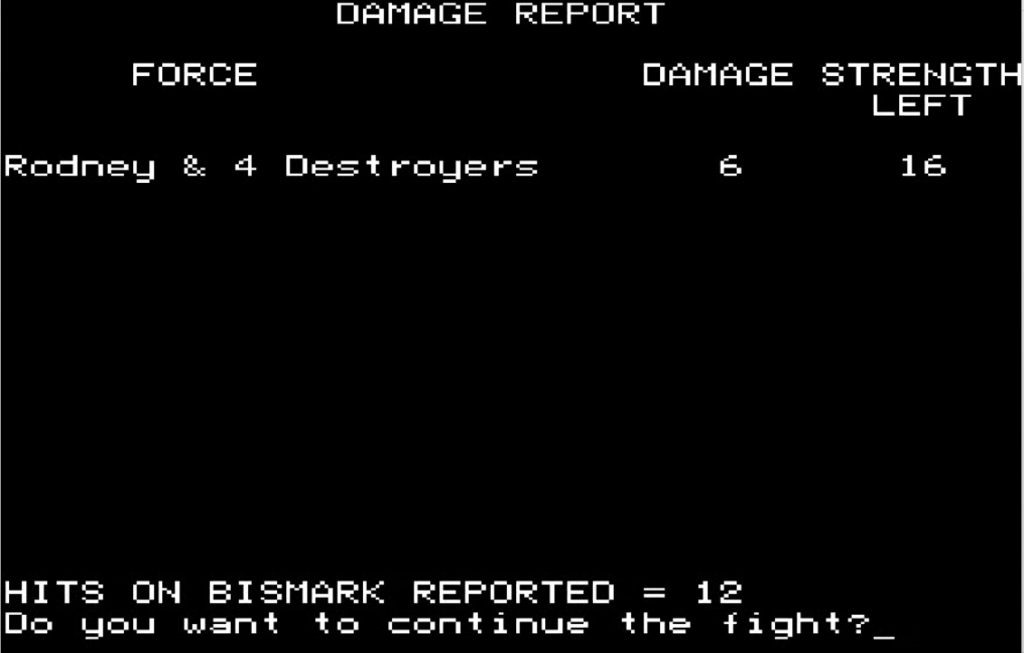
Initially boasting a strength of 30, the Bismarck is now down to 14 after its battle with the HMS Ramillies. I am now almost certain I will sink her, and my focus now shifts to maximizing points by minimizing losses. I intend to overwhelm the Bismarck with all the planes and ships in the area during the next turn !
After the HMS Rodney disengages from combat, I deploy my final airstrike for the HMS Victorious. This time, the planes locate the Bismarck but fail to inflict any damage. Alas, the Tier C pilots are currently deployed in Malaya, preventing the Japanese from trying anything funny.

That does not make any difference to the fate of the Bismarck. She only moves by one square the following turn, allowing my most powerful force to catch up :
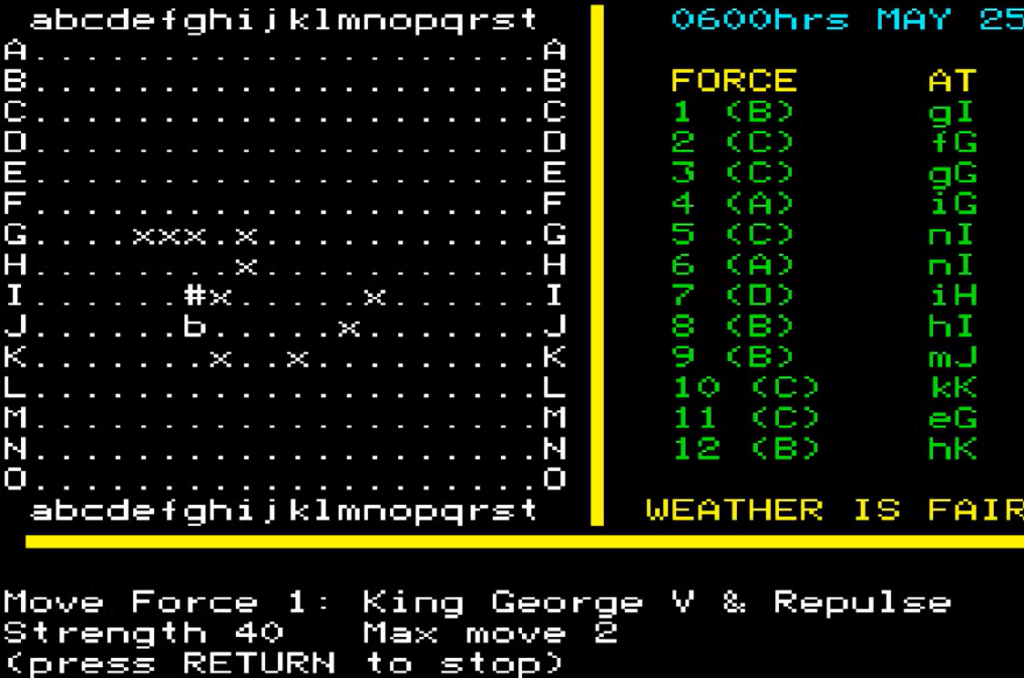
This time, the Bismarck stands no chance…
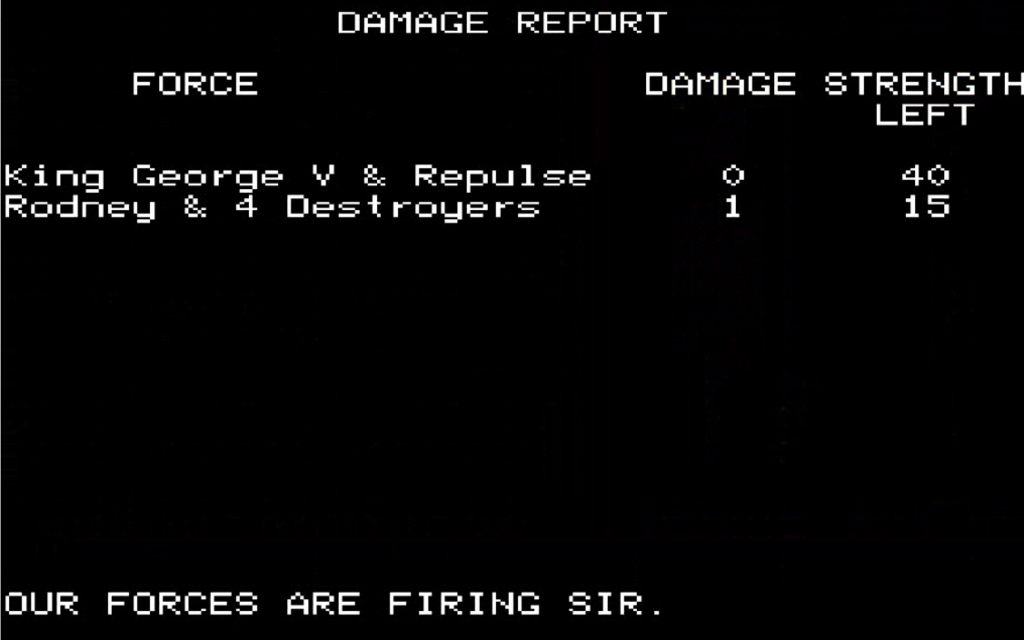
… and the Bismarck is sunk !

This was extremely short, lasting less than 10 minutes, but quite fun. I already covered the history of ASP Software in the Invasion article, so let’s delve into the review immediately !
Rating & Review
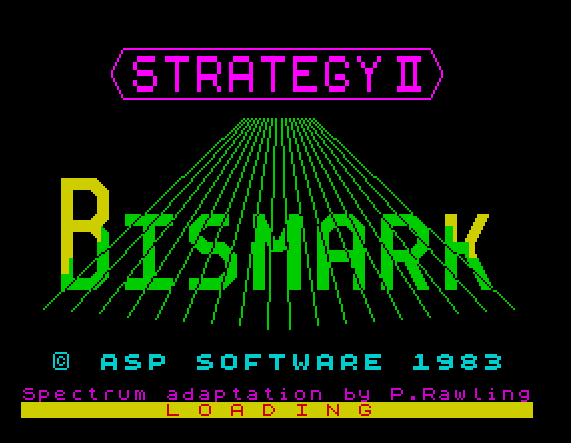
Strategy Two – The Hunt for the Bismark by Argus Press Software (then APS Software), UK
First release : October 1983 (multiplatform)
Tested on : BBC Micro emulator (Pantheon)
Total time tested : A bit less than two hours
Average duration of a campaign: 15 minutes tops, often less than that.
Complexity: Trivial (0/5)
Would recommend to a modern player : No
Would recommend to a designer : No
Final Rating: Well-designed but obsolete
Ranking at the time of review : 24/95
Summary :
Strategy Two – The Hunt for the Bismark is a simple game, but it is quick to play, offers a thematic experience, interesting decisions and a user interface with no significant flaws, making it enjoyable for the first rounds. It is however repetitive and lacks lasting appeal.
A. Immersion : Poor. The game captures the essence of the Bismarck hunt, but the graphics are just too primitive to be immersive.
B. UI, Clarity of rules and outcome : Adequate
C. Systems : Adequate. It is a simple game, with limited options : no shadowing, no impact of damage on ship speed, no intercepting the Bismarck when it passes through your fleets, etc. It still works for a bite-size game.
D. Scenario design & balancing : Very poor. There is only one scenario, with variations stemming from:
- the strategy used by the Bismarck (she usually beelines East, sometimes going South first, and occasionally doubling back, especially when attacked),
- The weather. Poor weather conditions prevent planes from taking off, and British ships can only detect the Bismarck if she is in the same square as them. Extended periods of poor weather make the game challenging, while stable weather for several turns – as seen in the AAR – makes it significantly easier. In my initial test game, I found and sunk the Bismarck in just 7 minutes, while in a later attempt, the weather remained poor from the beginning to the end and I never even caught a glimpse of her.
Overall, the game feels luck-based, but this isn’t an issue given how short a session is. Still, you have seen everything the game has to offer after 4 – 5 sessions – though for reviewing purposes I played 9 of them, winning 5.
E. Did I make interesting decisions : Yes, several each turn. How should I position my force? Do I use one of my three air strikes to detect the Bismarck? Do I continue combat with a damaged ship, or ensure the force survives to maintain detection capacity? For a 10-minute game, it’s relatively decision-rich.
F. Final rating : Obsolete, but the best British game thus far. It currently tops my “obsolete” list. The game is short, simple, and fun, and proposes a bite-size “strategic” experience that is hard to find in modern wargaming (only Into the Breach comes to mind for bite-size tactical experience), although of course it lacks the kind of depth that makes beating the computer feel rewarding. While I would probably have resented paying for the game in the 80s due to its limited replayability, this is not an issue in the 2020s with thousands of other games available. It also ranks two positions above Computer Bismarck, which was just too long (one could spend hours searching for the Bismarck) and plagued by a terrible UI.
Looking back, I wondered why I rated the luck-based Invasion so low and the luck-based Bismark so relatively high. I believe that’s because the weather’s impact on luck in the latter feels inherent to the experience, while extreme combat results in Invasion seem unfair. Moreover, players can manage luck in Bismark or bid for time (moving two squares east in poor weather to “neutralize” the undetected Bismarck also moving east), whereas there’s no such option in Invasion.
Contemporary Reviews
Once again, Spectrum Computing compiled all the reviews for me, and I did not find any other. It doesn’t help that Bismark turns out to be a common misspelling. Overall, Bismark enjoyed mixed reviews :
- In its October 1984 assessment of the British wargaming market, Crash categorizes Bismark as a “dodo (“don’t even waste your tape on copying them“). I would not trust this review though ; the reviewer claims to have won the game in 3 minutes during his test run, adding “lucky maybe, but not going back for another go”, so the rating comes from 3 minutes of testing.
- Computer and Videogames (December 1984) ranks the game “between the disastrous and the successful”, stating that “if you manage to cope with the problems of command and control, the game itself does offer a real, if simple, strategic challenge.” but that still that the game is “Okay as a magazine listing, but not really the sort of game I’d pay good money for.” Similarly, Games Computing calls the game “fair” in a brief review published the same month.
- Finally, ZX Computing in April 1985 aligns most closely with my perspective, stating that the game is “a good version” but warning that “it is possible that it may not hold your attention on repeated playing”.
If you want to form your own opinion, you can play online either the BBC Micro version or the ZX Spectrum version ! Be sure to report in the comments the result of your first attempt ! The game also received an Atari port I haven’t tested.
3 Comments
Excellent review, funny and fair. It’s a good Bismarck game. There’s a more action based one on the Spectrum from 1987 or so which I quite like as well.
Rodney and four destroyers managed to engage the Bismarck on the third turn (or maybe the fourth?). The Germans missed all the shots and in roughly three rounds the Rodney proceeded to disassemble the German Battleship (first exchange 19-0, second 4-0, third Bismarck sunk).
Everyone else did nothing. Can the Bismarck even win?
Looks like you had a perfect 100 score.
If the weather remains good and the Bismarck sails due East, I believe she has almost no chance.
I think she has a VERY good chance to escape if the weather remains poor several turns in a row, a good chance to escape if she immediately moves South, and she will be almost unstoppable if both happen.
In my first attempt, she moved South but the weather remained clear, so while I could not reach her with my ships, my planes consistently found her and damaged her, until the Ramillies finally caught her and finished her off, receiving 7 damage (final score). I thought “meh, trivial”, and lost the following session :).